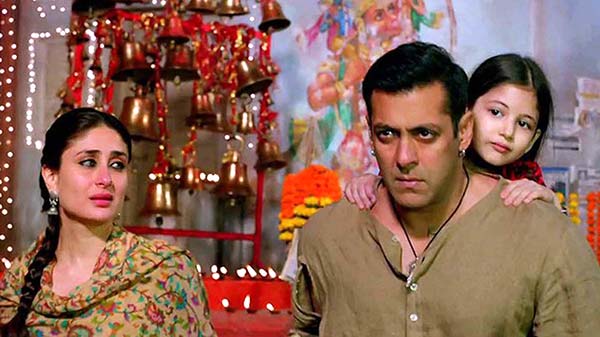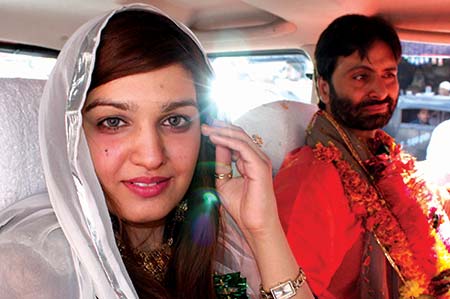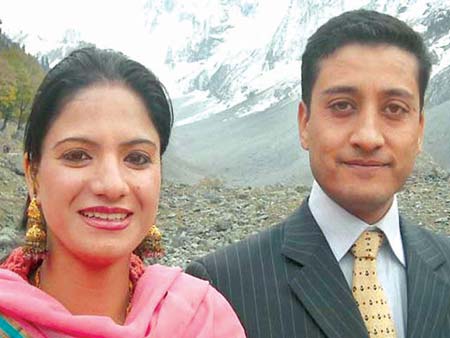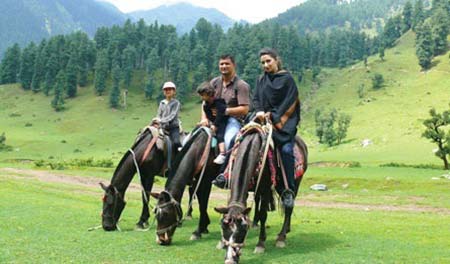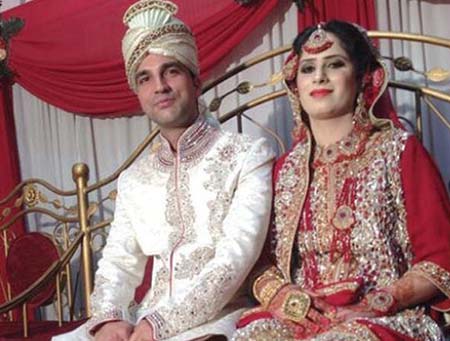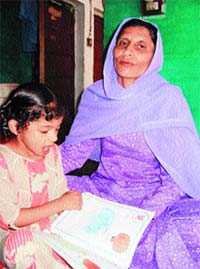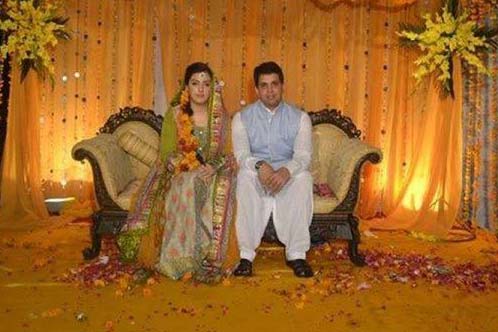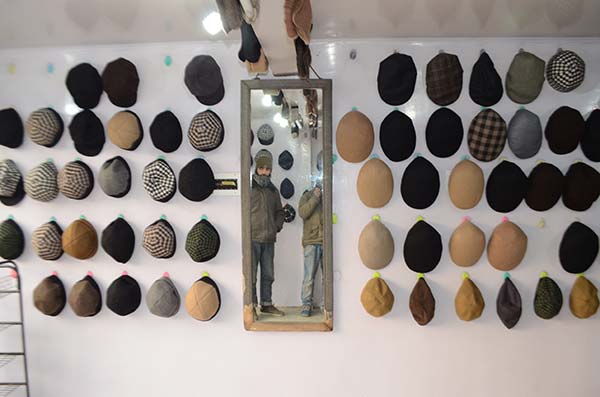With a cute mute Pakistani-Kashmir girl lost at Wagha border, actor Salman Khan created a highly emotional masala movie that happily ends at the LoC in Kashmir. It has already recorded Rs 500 crore business. But the complexity of the divide has prevented the people straddling the LoC from seeing even somebody getting closer to the utopian Bajrangi Baijaan, reports RS Gull
(Kareena Kapoor, Salman-Khan in Bollywood flick, Bajrangi Bhaijaan)
Hundreds of Kashmiris trekked to the fragile Thajiwas glacier in upper Pahalgam in 2014 summer, to create the most powerful ending of Kabir Khan’s Bajrangi Baijaan. Outnumbering soldiers guarding the make-believe LoC fence, the people from the two halves of Kashmir, force gates open and pave way for bruised and limping Salman Khan, the protagonist of the film, to crossover from Pakistani side to the Indian side of Kashmir. His reunion with Munni in no-man’s land is the drop scene. Charged situation on the two sides chokes the mute baby further thus ending her disability, a health issue that was reason for her India travel and subsequent separation from her mother near Wagha.
Kashmir relates with the movie to the extent of its sets and seemingly Kashmiri extras, the kangri and the hookah. The only shred of story that could be traced in Bajrangi’s plot is that once there was a minor PaK Gujjar boy in Joint Interrogation Centre (JIC) Srinagar who could neither hear nor speak. Cops recorded him as gounga waldi behra (mute son of deaf) after his arrest from Karnah in November 2011!
But, Khan, considered to be close to Prime Minister Narendra Modi, offers a Himalayan motivation for the governments on the two sides not to skip basic issues of the people. Fairly successful at the box office, the film may gross Rs 750 crore plus.
But Bajrangi Baijaan is not the first fortune earning movie that used complex crisis of the people straddling border, at LoC in J&K case. Bollywood has a basketful of border flicks and the trend coincided with the rise of militancy in Kashmir.
(JKLF’s Yasin Malik with his bride Mushaal Mullick.)
Heena, shot in 1991, was the first major initiative on this front, which was legendary director Raj Kapoor’s last film. He died while shooting was midway. Indians and Pakistanis figured in the film: Zeba Bakhtiyar (Heena) was cast against Rishi Kapoor, Haseena Moin wrote dialogues. Kapoor, the Kashmiri in the film, met accident and was washed away by water currents to PaK where Heena traced him. With his memory faded totally, he falls in love with her but is dubbed a spy once his Hindu credentials are established. Shot in the backdrop of cold war between Delhi and Islamabad, the movie ends after the diplomacy takes over.
But God reenacted Heena almost in complete reversal of its plot, less than five years later when the soldiers manning the LoC’s Raja Picket in Poonch fished out a young unconscious woman on October 6, 1995. She was rushed to hospital where she recovered to tell her story. She was Shehnaz Parveen, a resident of Amb Bariyala – Harijawalla falling in the Bagh district. She had a bad marriage. Unable to conceive, she was accused of being barren and consistent taunts by in-laws had forced her to think of suicide. After a fight with her husband left her face swollen, she jumped into the roaring Raya Pandori rivulet dividing Bimbar (PaK) and Rajouri, but survived. That started her long battle for an honourable survival that went horribly wrong.
“I said to the river: ‘Please kill me, let me die,’ ” she told journalist Catherine Philp in 2002. “I begged them (soldiers) to shoot me because I had failed to kill myself.” But she had to survive the pain and a crisis, no woman would ever imagine.
(Ajaz Meer of Chinari with his cousin and wife Kousar from Uri)
Once army cleared her after ensuring she was not a spy, Shahnaz was handed over to police that charged her under section 2/3 Ingress and Internal Movement (Control) Ordinance. The trial court – sub-judge Nowshehra – awarded her 15 months imprisonment on November 15, 1995. She was sent to the judicial custody for trial and eventually shifted to district jail Poonch on November 16, 1995. In the jail, a warden Mohammed Din, a resident of Surankote village in Poonch, raped her, on the morning of January 14, 1996.
She was shifted to Central Jail Jammu on January 28, 1996 where she realized her pregnancy, for the first in April. Though some jail-mates and some officials suggested her abortion, she decided against it. “Out of the saddest moment in my life, came the happiest thing I could possess,” she told them. By late 1996, Shahnaz was a mother. Her daughter, Mubeen was born in Jammu’s Nari Nikatan.
Soon after, two issues cropped up. Firstly, the officials were desperate to establish Mubeen’s paternity. Initially the two jails passed the buck but eventually a departmental enquiry and a DNA test established Din’s culpability. Secondly, how Shahnaz would manage her return home.
(Saba Qizilbash and Srinagar’s Syed Mujtaba Hussain met offshore and married. This photo is taken in Pahalgam with their two daughters.)
After she served her 15 months imprisonment, she was shifted to Nari Niketan on January 8, 1997. On August 8, 2000 she was again taken to Central Jail and imprisoned under Public Safety Act. By then, Din was terminated from his services and the court was hearing the case for compensation, thanks to Jammu lawyer A K Sawhney, whose PIL was crucial to restore some dignity to the mother and her daughter. Soon, jail authorities sent Mubeen to a school as Shehnaz took lessons in stitching and embroidery.
Court decided the case on fast track. She was given a compensation of three lakh rupees, a right to a flat till her repatriation is settled and her right to decide if she wishes to stay back or go home. Set free on August 3, 2002, she got a class-IV type flat at Janpore.
But her repatriation proved a heady task. On February 15, 2002 when she was driven to Wagha for repatriation, Pakistan agreed to take her without her Indian kid. It was repeated twice again, the last time in July 2002. Pakistan rejecting her daughter made Shahnaz so desperate that she was willing to accept Din as her husband if he agreed to take both of them honourably – an option officials discouraged.
It took almost two years to establish some link with her family. Initially they would send her letters and tape-recorded messages, especially her brother from Saudi Arabia but the media exposure led to collapse of the communication. It was only in October 2002, that Pakistan Human Rights Commission contacted Sawhney and made Shehnaz to talk to her brother, uncle and some other relatives. Then, they agreed to accept her along with her daughter.
Her return in December 2003 – through diplomatic channels in Delhi and not routine repatriation through Wagha, was ensured by the peace process that NDA government initiated.
But Shahnaz’s story did not die soon. On November 20, 2006 Poonch’s Session’s Court awarded Din five-year imprisonment and a fine of Rs 30,000. He appealed against the verdict that Justice Virender Singh of High Court dismissed on July 12, 2007.
Back home, her family tried their best to manage the situation. After initial sympathy, the taunts started forcing the family to migrate to some other places. Within two years, Shahnaz died. Mubeen is still studying. Madeeha Gauhar, one of Pakistan’s famed theatre personalities who runs theatre group Ajoka spent some days with the family and wrote a script for the stage. Dukh Darya, the drama, triggered a wave in Pakistan but when she flew on the invitation of Jammu University for the same, the performance was banned at the last moment on March 25, 2008 citing “controversial nature” of the plot.
But contiguity of border and proximity of blood relations separated by the LoC, invisible for decades till the monstrous serpentine fence took over, did not prevent men, women and children crossover, inadvertently or deliberately. While Shahnaz was still dominating news barely half-a-year after her repatriation, a Pahadi damsel Rangili Bi was caught by 8-JAK Rifles on August 26, 2003 when she was running towards a shrine in Poonch’s Shahpur belt. A resident of Bandi Chichyan hamlet in Fatehpur belt, she was interrogated by the troops and after ruling out the possibility of her being a mole, she was handed over to the police for routine follow up.
Bi had a simple story. Theirs’, she said, is a herdsmen family. One day, in the recent past, while grazing her cattle, an ox fell from the cliff and died. Her in-laws thrashed her for the negligence and this hurt her a lot. It was in this disturbed state of mind, a few days later, while grazing she spotted a shrine. Not knowing that the shrine falls on the other side of the LoC, in her bit to get peace of mind she almost ran towards. Soldiers arrested her at the gate of the shrine. Law took its own course, so did the repatriation.
(Esma Bashir of Chinari with her groom Irfan Salamabad Uri. Barely 15 Kms apart but they had to travel 1500 Kms for wedding.)
Love has transcended borders for ages and in the twenty-first century fence, thermal imagers and concertina wires have failed to stop this emotion as they have failed to manage hate that exists on either side.
When Nageena, a young mother of four in a Poonch village had a crush on Rashid, her neighbour – they eloped not to Jammu but to the other side of the LoC. While carrying her youngest kid, they cut the razor-edged fence to cross over skipping the sprawling minefields. After over two months sojourn in the ‘other Kashmir’, she came back to her ancestral Kasba village in 2008 summer and landed in a police station.
But not every lover is lucky. Najma, a Karnah teenager and daughter of Muhammad Yusuf Awan fell for a young man Asif, living in Chelyan on the other side while seeing him on the banks of Neelum, a fast flowing noisy torrent that is de-facto LoC for most of the north Kashmir. Then, the LoC was slightly relaxed owing to devastating October 2005 earthquake. He tossed a wireless set towards her and for a long time, the young girl would remain busy talking. One day, it was discovered and she was detained for spying by BSF on April 23, 2006.
Kashmir’s LoC is home to tragedies of epic proportions. Villages straddling the ‘line’ were enjoying some kind of informal freedom to interact under conditions monitored by army commanders locally. Eruption of militancy put an end to it. As part of the counter-infiltration mechanism, scores of villages were de-populated during amorphous years of militancy. While a few moved towards hinterland, most of them actually crossed over. Human Rights Watch said that apart from ‘militants’, there are 29,932 registered Kashmiri refugees living on other side of the LoC of whom 338 died in 2005 earthquake.
Safina, a young girl from North Kashmir, is an interesting instance. Born to a Kashmiri father and Pakistani mother, she was born in Pakistan. Later, the family settled in Kashmir. But the conjugal issues between her parents led to separation. Her mother remarried in Srinagar. As the father and mother resumed their new lives, Safina continued to stay and study in Kashmir as a Pakistani national. One day, when some clerk was dusting the files, he detected the flaw. She was sent a notice to go “home”. With both her parents in Kashmir, this college going girl was desperate how can be a place her “home” where she stayed for three months after birth? A media campaign actually led the government granting her citizenship on humanitarian grounds in October 2008 albeit after an epic legal battle.
(Unfortunate: Shahnaz with Mubeen in Jammu)
Borders usually play a spoilsport in relationships. Womens News Service reported on October 14, 2007 the historic reunion of Niaz Mohammad and his wife Barkat Bi, both septuagenarians, separated by the 1965 war. “For 42 years the couple were close enough to see each other across the border line between their two villages and they could even hear each other if they yelled loudly enough,” the report said. “In March, they finally managed to have a reunion, when Niaz Mohammed was granted a permit for 28 days to visit Barkat Bi on the Indian side.”
A young man fled Kashmir in 1990. Soon after, his wife and three children joined him travelling on passport. But she left his eldest daughter Rahila Barkat behind in Baramulla. It took a lot of campaign that government took note of the humanitarian issue and permitted her crossover in June 2007 as “rarest of the rare cases”.
Areas closer to LoC exhibit fits of love and relationships quite often. Keran completely migrated in early 1990s. Now the relatives from either side go to the banks of Kishanganga on specific days to see and “talk” to each other. They fix marriages by typing letters with pebbles and tossing it to other side.
Uri has innumerable relationships divided by the LoC. It has many tragedies too. One tale that everybody in Uri knows is that of Kapur Jan, a woman who once lived in a Bagh village not far away from Bandi on the Hajipir Pass as daughter of Abdul Aziz Pathan. During the fateful year of 1987 she had crossed over as 14-year old bride of Jabla’s Javed Khan. A year later militancy started. One fine morning, she woke up to see Khan missing and was told he has crossed over. Jan waited for a year and then crossed-over to trace him but was caught. After repatriation, she failed to trace him but was reunited with her parents.
After 12 years of wait, she married another Uri resident Yaqoob in 2002. Once back to Uri, she found him already married with children. Tensions led to squabbling and eventually to torture. She crossed over again but was caught and jailed. Once she completed her jail term, she was pushed back. In 2005, her parents counseled her to return to her husband. While crossing over – July 27, 2005 – she was caught yet again at Suntung post by BSF. She served mandatory six months imprisonment. This time she was not pushed back. As a mental wreck she lived in a tin-shed for long time after crossing over the LoC six times. “Her name was Arshada,” a police officer said. “We repatriated her in 2009 through Amritsar.”
(NC leader M Shafi Uri’s doctor son with his bride from Muzafarabad, PaK)
Hanifa of Sheeri in Baramulla symbolizes the dark side of love and longing. Farid Bhat, her husband left her with their 15-month old daughter Nahida and crossed over in 1990. Though police says he went to become a militant, the family and relatives suggest he fled after his brother was killed by unidentified militants. In Muzaffarabad, he started trading and owns a cloth shop.
As the bus service started, Akhter submitted her form but did not get a clearance – a process she repeated six times later. Soon after the earthquake, she attempted to crossover but she did it slightly late because by then troops had been redeployed. In 2006 her daughter and mother-in-law were granted a passport and they had reunion in Muzaffarabad. Farid retained his daughter there. Akhter desperately tried to go but failed. She even bribed a cop for a passport but he proved an imposter. Eventually Farid sent her a divorce! As her millionaire “husband” is making a fortune in PaK capital, Akhter is surviving by collecting fuel wood and selling it. Her most supportive brother Rashid has allegedly disappeared in custody forcing her another brother Majid to flee across.
Unlike the elite marriages of JKLF’s Yasin Malik, Sajjad Gani Lone or NC leader Mohammad Shafi Uri’s youngest son, these relationships do not make it to TV. Even the 300 PaK women who returned with their erstwhile militant husbands under a special package are living a tense incomplete life because they are yet to get their citizenship or a passport. They can barely talk to their parents if and when the latter will ring them up.
Kashmir’s divide has created such a huge quantum of tragedies that a single Bajrangi cannot represent them. Bollywood will have to reassess its capacity before taking LoC seriously.


